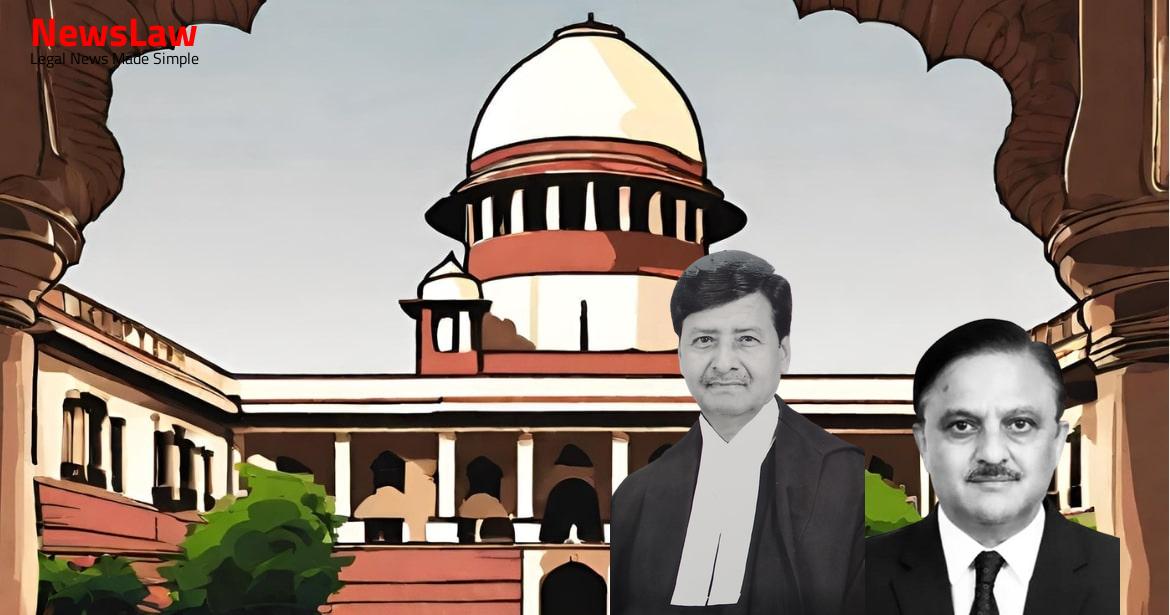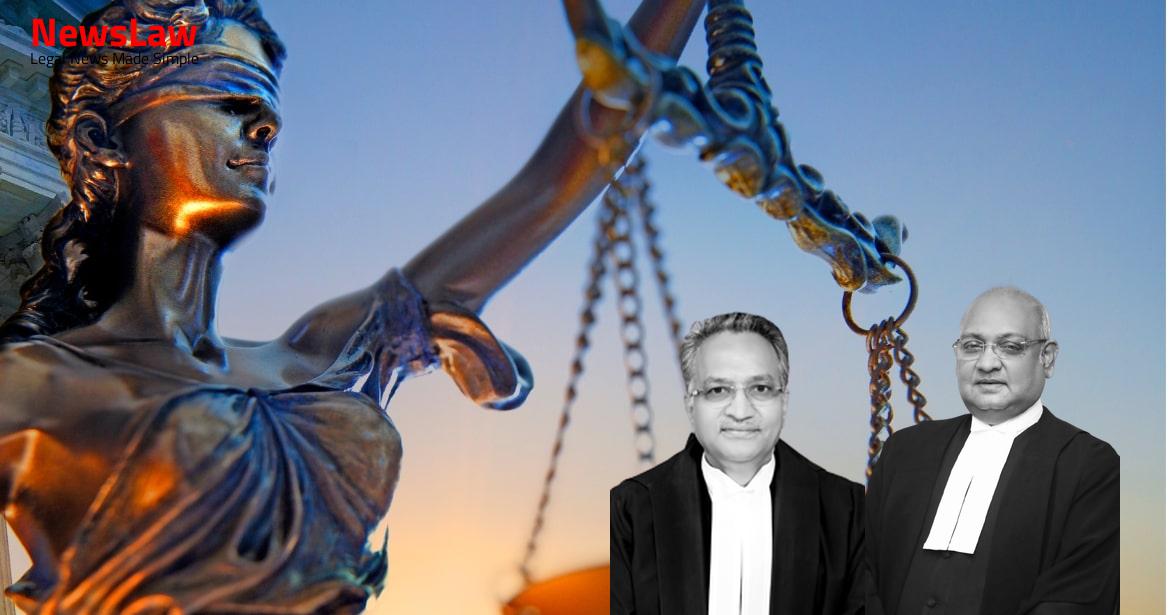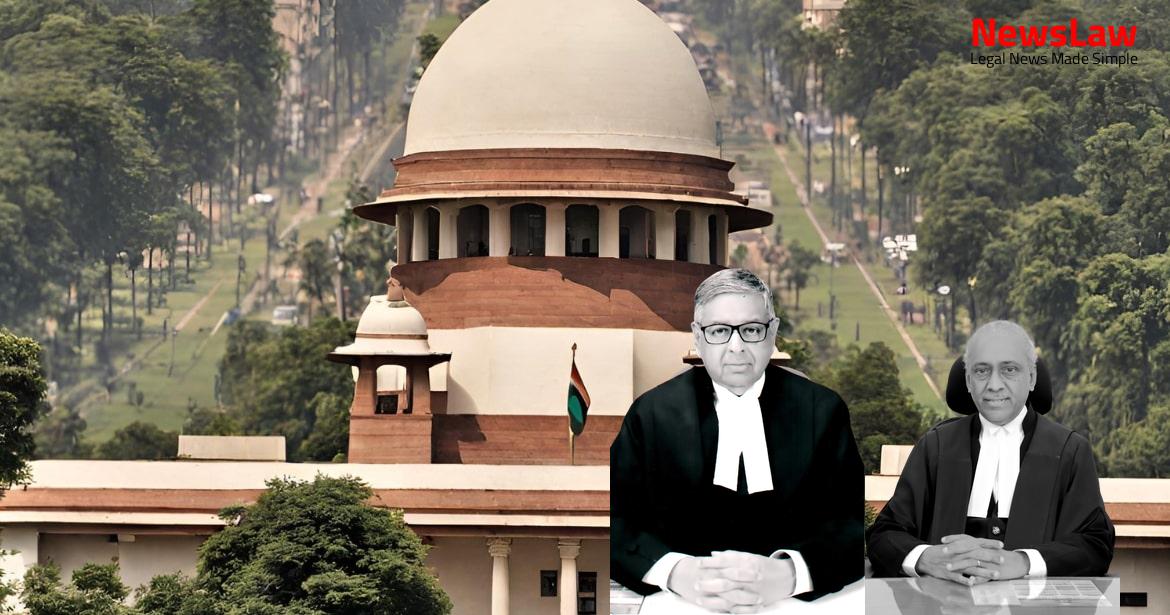Explore the nuanced legal analysis of termination and retrenchment in this case, where the Court’s examination of labor laws and procedural requirements plays a pivotal role. The interpretation of ‘retrenchment’ under the Industrial Disputes Act and the significance of compliance with Section 25F provisions are key aspects addressed in the court’s judgment. Gain valuable insights into the complexities of employment law and the implications of incorrect terminations as elucidated by the legal analysis in this case.
Facts
- The W.P. allowed setting aside Ext. P14 award of the Industrial Tribunal
- The Division Bench of the High Court confirmed the order of the Single Judge
- The termination of the employees was found to be through irregular ways by the Syndicate of the University
- The Division Bench’s judgment dated 23 March, 2000, played a crucial role in setting aside the Industrial Tribunal’s award
- Sree Sankaracharya University of Sanskrit Ordinance, 1993 established the 1 respondent-University.
- Non-teaching staff were initially engaged as daily wage employees and later regularized on 7 May, 1996.
- Objections raised regarding the regularisation process led to a de-regularisation order on 24 March, 1997.
- The de-regularisation order by the 1 respondent was upheld, terminating the services of the non-teaching staff.
- The validity of the de-regularisation order was confirmed by the court, leaving questions of non-observance of the Act 1947 to be examined in future legal proceedings.
Also Read: Recovery of Misappropriated Temple Funds: Court’s Legal Analysis
Arguments
- Learned counsel relied on various judgments to support the submissions.
- Violation of Section 25F of the Act 1947 was admitted.
- Appellants were appointed on a daily wage basis without proper selection process.
- The earlier finding of the Division Bench does not prevent the appellants from claiming benefits under Section 25F.
- The Tribunal’s award of deemed service with back wages is justified unless validly terminated.
- The nature of appointments does not preclude compliance with Section 25F.
- Learned counsel for the respondents relied on judgments in R. Vishwanatha Pillai Vs. State of Kerala, Rajasthan Tourism Development Corporation Ltd. Vs. Intejam Ali Zafri, Satluj Jal Vidyut Nigam Vs. Raj Kumar Rajinder Singh, Punjab Urban Planning and Development Authority Vs. Karamjit Singh.
- Counsel argues that appointments conceived in fraud and deceit are not protected by Section 25F of the Act.
- Respondent’s counsel asserts that even if there was a violation of Section 25F, automatic reinstatement should not be granted; reasonable compensation may be appropriate based on the period of service.
- Each workman received their last pay drawn and Rs. 68 lakhs during litigation, making 50% back wages unfair. Therefore, the Division Bench’s decision should not be interfered with.
- The Act of 1947 applies to the 1st respondent-University, obligating them to comply with its provisions.
Also Read: Legal Analysis in Assault and Homicide Case
Analysis
- The termination of service in this case would be considered retrenchment due to non-compliance with pre-conditions for valid retrenchment, making the termination illegal and invalid.
- The judgement in the Rajasthan Tourism Development Corporation Ltd. case is mentioned, emphasizing the need for workmen to have worked for 240 days in a calendar year to fall under Section 25F provisions.
- Termination of a daily-wage worker can be considered illegal if done unfairly or in violation of labor practices, where junior workers were retained, leading to reinstatement with back wages.
- The significance of considering the legality of employee appointments before assessing eligibility for relief under Section 25F is highlighted.
- Cases of terminated daily-wage workers who were found to be terminated illegally may not always result in reinstatement, depending on the circumstances.
- The termination of certain workmen without compliance with Section 25F resulted in them being deemed in service until valid termination, leading to consequences specified by the court.
- The importance of considering compliance with Section 25F provisions in cases of termination is reiterated throughout the analysis.
- The part also addresses the concept of ‘retrenchment’ and how it applies to various situations of termination based on legal and procedural considerations.
- The role of the Tribunal and Courts in determining appropriate relief for non-compliance with Section 25F is emphasized in the judgment analysis.
- Different scenarios of termination, including illegal appointments and continuous service periods, are discussed to determine the applicability of Section 25F provisions.
- The word ‘terminated’ in the passage is used in a transitive sense, indicating an act by somebody to end an appointment, not just by the passage of time.
- The provision covers both transitive and intransitive senses within the context of termination.
- Employers can terminate employment by a composite order that both provides employment and ends it.
- Pre-emptive provisions to terminate are treated the same as post-appointment termination.
- The definition of ‘retrenchment’ under Section 2(oo) of the Act is broad and includes termination by the employer for any reason.
- The interpretation of ‘retrenchment’ in the Act must consider both narrow, natural, and wider literal meanings.
- Termination of a daily-wage worker without adherence to procedural requirements under Section 25-F of the Industrial Disputes Act may lead to compensation instead of reinstatement.
- Illegal termination due to non-payment of retrenchment compensation can still be rectified by paying the compensation if reinstatement is not feasible.
- Retrenchment refers to the termination of a workman’s service for any reason other than disciplinary action.
- Section 25F of the Act 1947 outlines the conditions precedent for retrenchment, including giving notice and providing compensation.
- Continuous service for not less than one year is a prerequisite for retrenchment as per Section 25B of the Act.
- The nature of employment is not a significant factor in determining the applicability of retrenchment provisions.
- Retrenchment is mandatory under certain conditions as defined by Section 2(oo) of the Act 1947.
- The act defines the term ‘workman’ and specifies conditions for continuous service under an employer.
- Section 25-F of the Act imposes restrictions on retrenching a workman with more than one year of continuous service.
- The Act clarifies that all forms of termination, except those excluded explicitly, constitute retrenchment.
- The termination of the daily wager workers was upheld as violative of Section 25F of the Act 1947.
- A lumpsum compensation of Rs.2,50,000/- was awarded to each worker in lieu of reinstatement with back wages.
- The compensation must be paid by the respondents within three months.
- Reference was made to a case where three years of service was required for regularization, but due to inadvertence, an employee’s name was included for regularization.
Also Read: Legal Analysis in Disciplinary Action Case
Decision
- High Court judgment dated 30 January, 2010 is set aside
- Award of the Industrial Tribunal dated 14 November, 2005 is modified as indicated
- Pending applications are disposed of
- The appeals are partly allowed
Case Title: K.V.ANIL MITHRA . Vs. SREE SANKARACHARYA UNIV.OF SANSKRIT AND ANR. (2021 INSC 679)
Case Number: C.A. No.-009067-009067 / 2014



